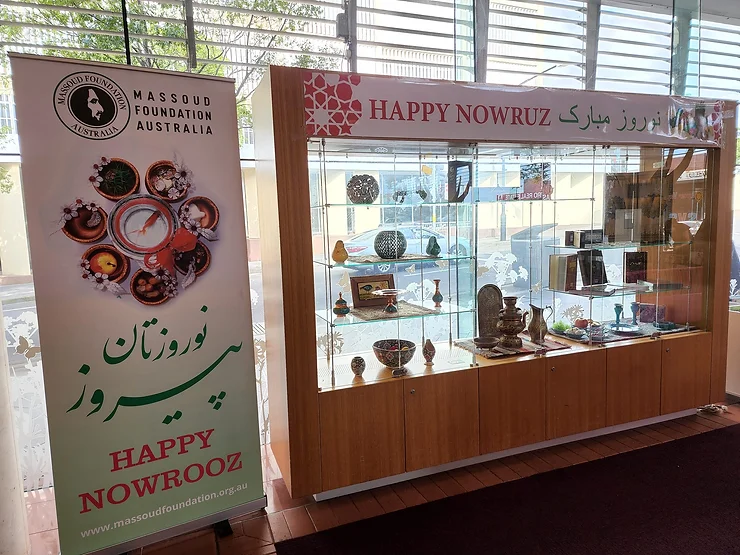On Sunday, 27th March 2022 the Massoud Foundation Australia and our partner Ariana Australia Association celebrated Nowruz with members of our community, our stakeholders, and the newly arrived refugees from Afghanistan.
What is Nowruz:
Nowruz literally means “new day” the first day of the year for the northern hemisphere, Afghanistan, Iran, Tajikistan, and other central and south Asian countries. It has been observed for centuries as the victory of spring over the darkness of winter and has a special place in the history of the people of Afghanistan and their traditions. In 2009, the United Nations recognised the 21st of March as the International Day of Nowruz.
In Afghanistan, Nowruz is traditionally celebrated in Mazar-e Sharif by raising a flag in the courtyard of the Blue Mosque. This act is followed by people all around Afghanistan in various cities, but the main flag is raised in Mazar-e Sharif. The hoisting of the flag in fact marks the beginning of Nowruz celebrations in Afghanistan.

The Red Tulip Festival is the festival held on the day after Nowruz and carries on until the beginning of May, so it lasts for roughly a month. The festival gets its name from the fields and hills of Balkh, Faryab, and some other northern regions of Afghanistan which are filled with red tulips. It is custom for families to go to the heart of these plains and enjoy the refreshing weather of spring.

Haft Seen literally translates to seven S’s. This is an arrangement of symbolic items whose names start with the letter “Seen,” It is traditionally displayed at homes during Nowruz, similar to a Christmas tree.
The seven items:
Sabzeh – wheat sprouts are grown in a dish (سبزه): Sprouting /Grass: the symbol of rebirth and growth.
Samanu – a sweet wheat germ pudding (سمنو): Samanu: the symbol of power and strength.
Senjed – oleaster (commonly known as the Russian olive) (سنجد): Elaeagnus angustifolia: the symbol of love.
Somāq – sumac (سماق): Sumac: the symbol of sunrise.
Sirkah – vinegar (سرکه): Vinegar: the symbol of patience.
Seeb – apple (سیب): Apple: the symbol of beauty.
Seer – garlic (سیر): Garlic: the symbol of health and medicine.
Other items that start with Persian letter “س” that are sometimes included:
Sonbol a plant from the lily family (سنبل): Hyacinth: the symbol of spring’s arrival.
Sikkah coins (سکه): Coin: the symbol of wealth and prosperity.
Saat clock (ساعت): Clock: the symbol of time.
Items that don’t start with “س” but, nonetheless, are invariably included:
Tokhm-e Morg Rangi (تخممرغ رنگی): Eggs: the symbol of fertility.
Ayina (آینه): Mirror: the symbol of self-reflection.
Shem’a (شمع): Candle: the symbol of enlightenment.
Maahi-ye Qırmız (ماهی قرمز): Goldfish: the symbol of progress.
Ketaab (کتاب): Book: the symbol of wisdom.

Haft Mewa (Seven Fruits ) literally translated to seven fruits, is a sweet fruit salad type dish made from seven dried fruits and served in its own syrup. This is a long-standing tradition in Afghanistan and is often placed alongside the haft seen on the Nowruz table.
As someone who only spent the initial first 4 years of my life in Afghanistan and hence doesn’t have a bias towards Nowruz foods, I can confirm that this dish is in fact very appetizing and you should strive to try some of the opportunities that arises.

Buzkashi (Goat Pulling) is the national sport of Afghanistan and is played in abundance during Nowruz celebrations. Large competitions are held during the Red Rose Festival across Mazar-e Sharif and other provinces within Afghanistan.
To put it very briefly, Buzkashi involves two teams of skilled riders competing with special horse to obtain a goat carcass and deliver it to a specified point.
Dr Whitney Azoy, who was the Director for the American Institute of Afghanistan Studies in Kabul and has been involved with Afghanistan since 1971 authored a book titled “Buzkashi: Game and Power in Afghanistan” In this book he says “leaders are men who can seize control by means foul and fair and then fight off their rivals. The Buzkashi rider does the same” And personally I thought that was a beautiful way of explaining buzkashi as more than just a sport.

Jashn-e Dehqan (translated to the Festival of Farmers or also known as Farmers Day) is celebrated on the first day of the new year. On this day, the farmers walk in groups throughout the major cities as a sign of encouragement for agricultural production.
Prior to the Taliban takeover, this activity was only performed in Kabul and other major cities and had mayors and other high-ranking government personalities participating as a sign of respect.

Samanak, if you remember from earlier is one of the S’s of the Seven S’s or Haft-Seen. There is no translation for it in English but in essence, it is a sweet paste made entirely from germinated wheat and specially prepared for Nowruz.
The wheat is soaked and prepared for days so the entire process can take up to a week. Traditionally, especially in the Northern Provinces of Afghanistan, the final cooking of the samanak would occur overnight and is prepared by the women of the household. The women sit near the huge pot in which it is made, sing songs, and have fun whilst each of them takes turns stirring the samanak. Then in the morning, warm samanak is given to relatives and neighbors.
In Afghanistan, the women also sing a song whilst making the samanak overnight. The song translates to “Samanak is boiling and we are stirring it, others are asleep and we are playing the drums.”
Unfortunately, the Taliban have banned Nowruz celebrations this year and their reason for doing so is because they do not celebrate any ceremony outside of Islam. I don’t mean to delve into religion or politics here but, it is worth noting that after the Arab-Muslim conquest of Afghanistan in 650 CE, Nowruz celebrations survived and were the main royal holiday at the time. And, the celebrations have still survived till this day.
Fun fact: The Solar Hijri calendar is the most accurate calendar in use today although it is only officially in use by Afghanistan and Iran. It is similar to the Lunar Hijri calendar and has the same start date, but as the names suggest, one uses Solar years whilst the other uses Lunar years.
Nowruz translates to the 21st of March on the Gregorian calendar which coincides with Harmoney Day in Australia.
It t was our honor to host the first Nowruz for newly arrived refugees from Afghanistan.
A special thanks to our sponsors Lux Gallery, ABZ Foods for their generosity, and Blacktown City Libraries for showcasing our Nowruz exhibition for Harmony Week.
By: Elham Faiz, Youth Project Officer at Massoud Foundation Australia










